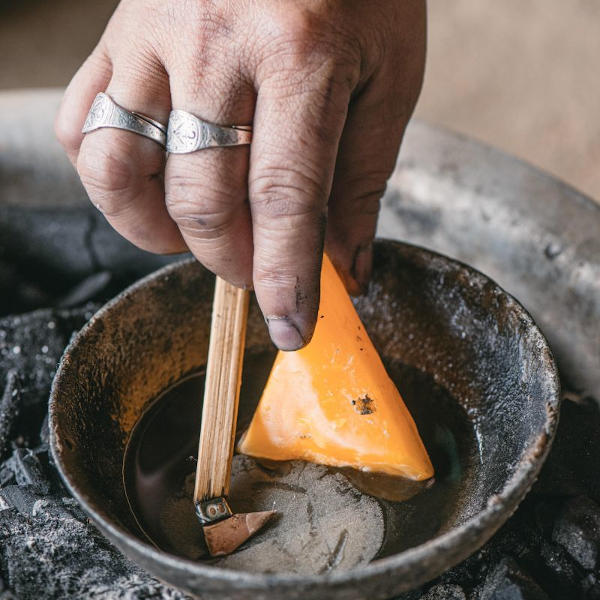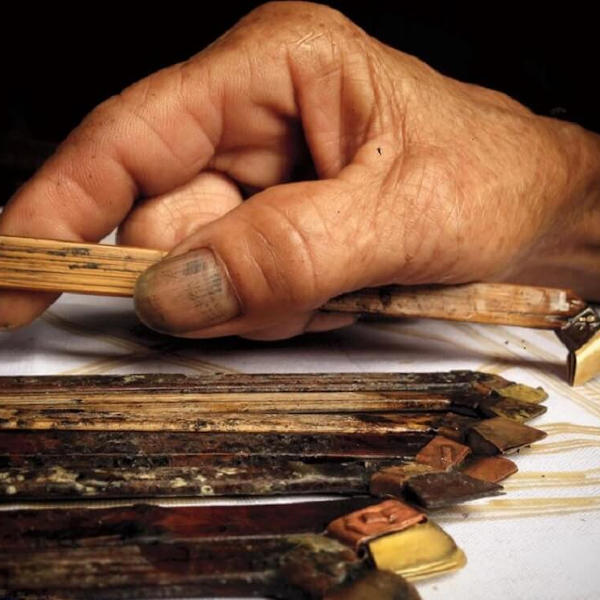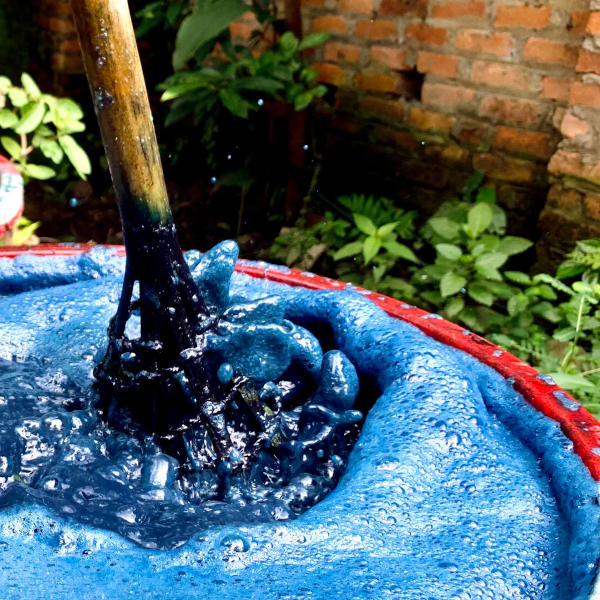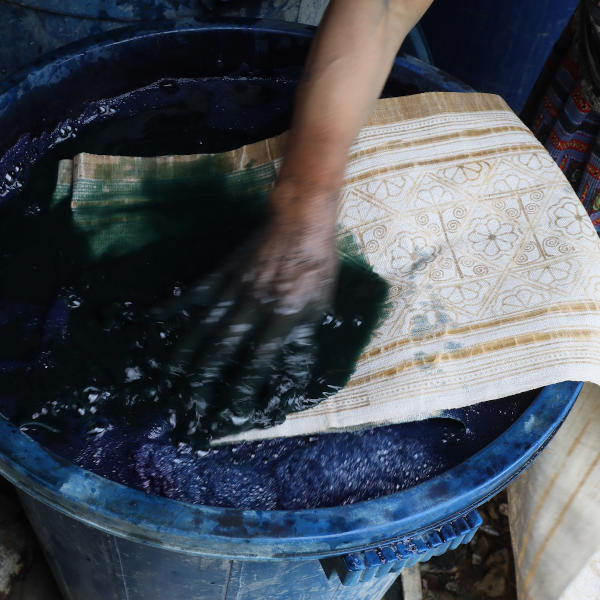The stunning art of the Hmong people
The Hmong are highlanders from the North of Vietnam. Their traditional costumes follow an old and very complex formula of weaving, indigo wax batik and embroidery. Knowledge passed on through generations.
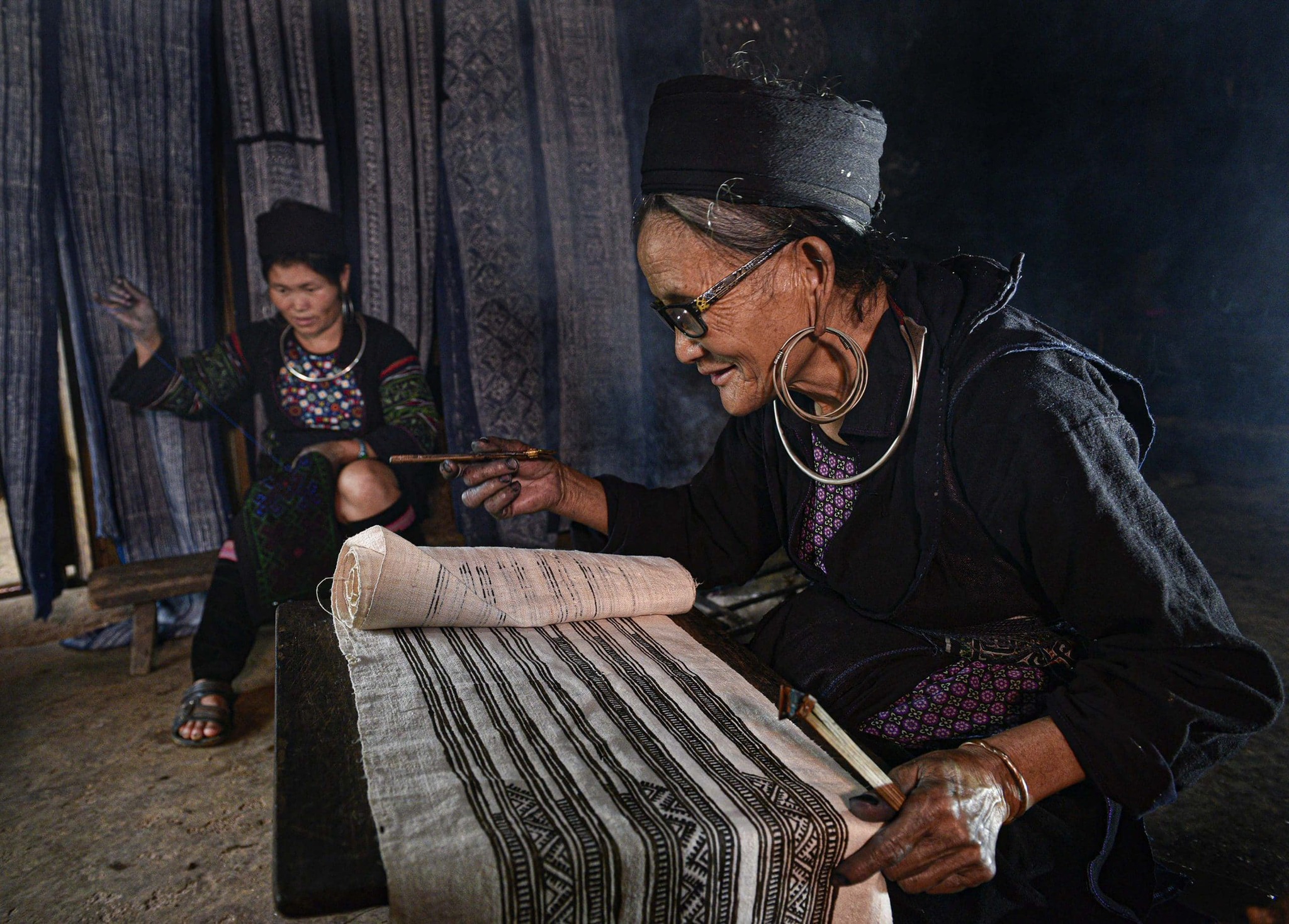
In Austria we know blueprinting from our easternmost state of Burgenland, where traditionally a so called "pap" is printed on fabric with wooden stamps. After that, the fabric is dyed using indigo.
Now, we are by no means unique to this technique. Let me introduce the H'mông people from the north of Vietnam. Their method of "blueprintig" is very similar to ours, but they use a stylus with molten beeswax to paint their traditional patterns on natural fabric. Then they dye the textiles using indigo and boil the wax out, a technique called resist-dyeing.
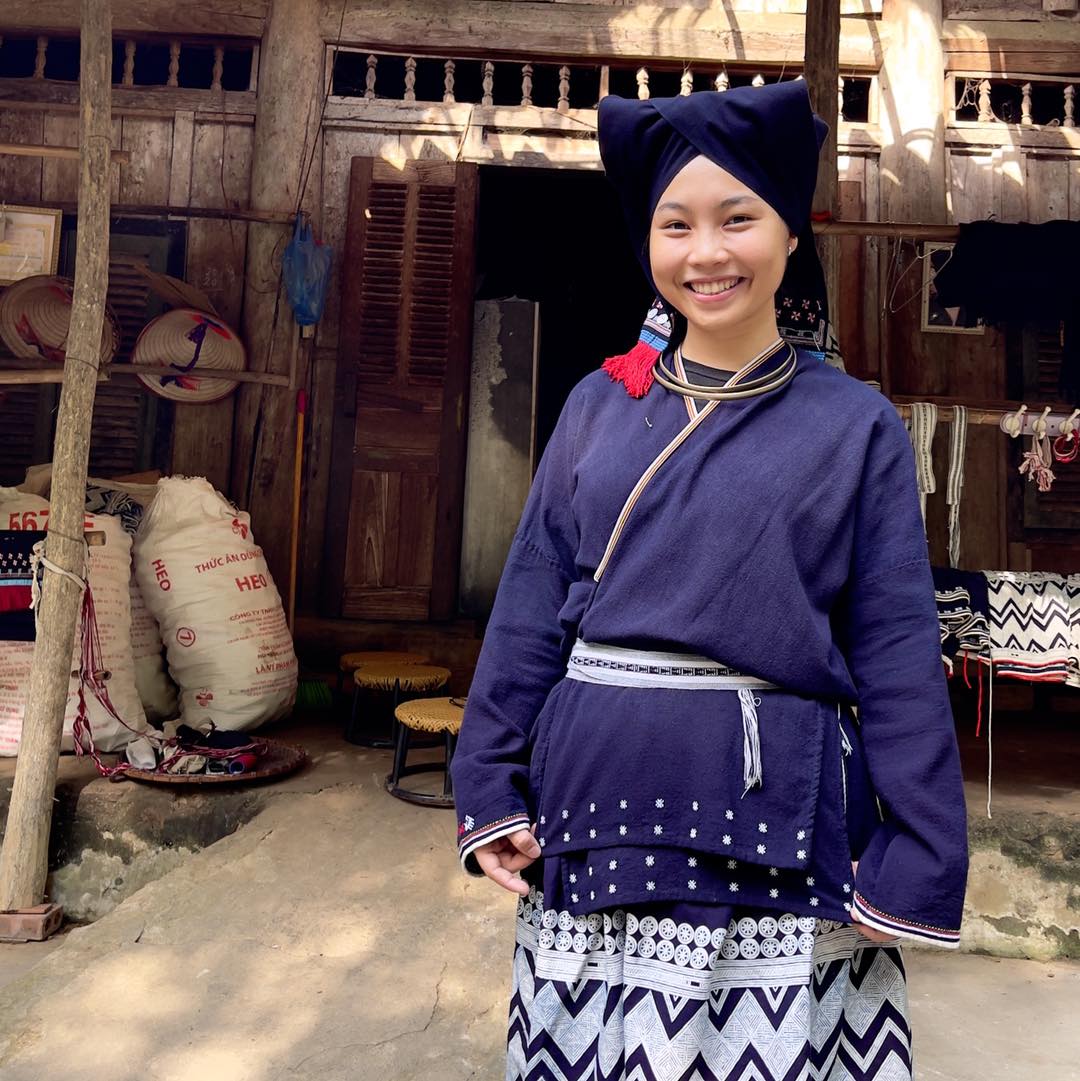
Those among you who have read my old travel articles may be familiar with the H'mông people already. They are an ethnic group in northern Vietnam, but also in the bordering areas of Laos and China (even though they are called differently by the governing system there). Anyway, back then already I was fascinated by the small, but significant parallels of H'mong customs and Austrian rituals. To explain everything here would go too far, but some interesting thoughts about silk-, horse- and tea roads have crossed my mind.
Enough musing, let's focus on H'mông textile art.

In the northern highlands of Vietnam, especially Lao Cai, Son La, Ha Giang and Yen Bai, you can often see H'mông women in their tradtional garments, elaborately decorated with hand-painted motifs. Most of the time, the patterns are painted on the fabric in beeswax, then the cloth is dyed using natural indigo. When the process is finished, the beeswax is boiled out, leaving behind the white patterns on blue - the unique trademark of the ladies from the mountains.

The traditional costume as an expression of a long history
Especially in the northern highlands, batik (resist-dyeing) is a popular method to produce beautiful clothing. However, the H'mông ladies are especially proud of their unique way of hand-painted beeswax patterns. Every line, dot and swirl is pointing out the long standing cultural values of an indigen people.

For the beeswax technique, we need:
- Textiles:
Usually you use cotton or linen fabric - the H'mông prefer linen. The cloth is washed, dried and placed on a wooden board. It is smoothed down then, usually with the tusk of a wild boar. - Stylus:
The stylus somehow reminds of a quill - a bamboo handle with two opposing, rounded copper plates. The space between those plates can hold a small amount of molten wax. - Bowl:
A small metal bowl to contain the molten beeswax. - Beeswax:
Usually the H'mông collect natural beeswax in the forest. - Oven:
Since the wax needs to stay liquid, the artists work next to an oven.
The artful arrangement of geometric forms, lines and spirals to traditional patterns is a speciality of the H'mông. A group called the Black H'mông rather tends to figurative depictions of animals, plants and tools of their daily life.

When the wax pattern is applied to the fabric, it is dyed using natural indigo. Once the colour is set, the beeswax is boiled out of the fabric. The artists are left with deep blue cloth, decorated with complex, white patterns. Additionally, the H'mông women enhance the beauty of the product with colourful embroidery. Then, they turn it into their lovely, traditional costumes. Hand drawing the patterns in beeswax is technique unique to these interesting people.
Ancient values meet modern design
The more complex the patterns on a traditional H'mông costume and the more time the artists dedicated to their drawings, dye and embroidery, the more valuable the resulting dress will be in the end. These sets of clothing can cost from approximately one hundred, up to two and a half thousand Euro.

Our designs by Chie Du Pu Di Pa often feature resist-dye technique with beeswax, combined with other woven fabrics and embroidery to form a unique piece of design that lives with unpretentious forms pointing out the beautiful origins from the forest.
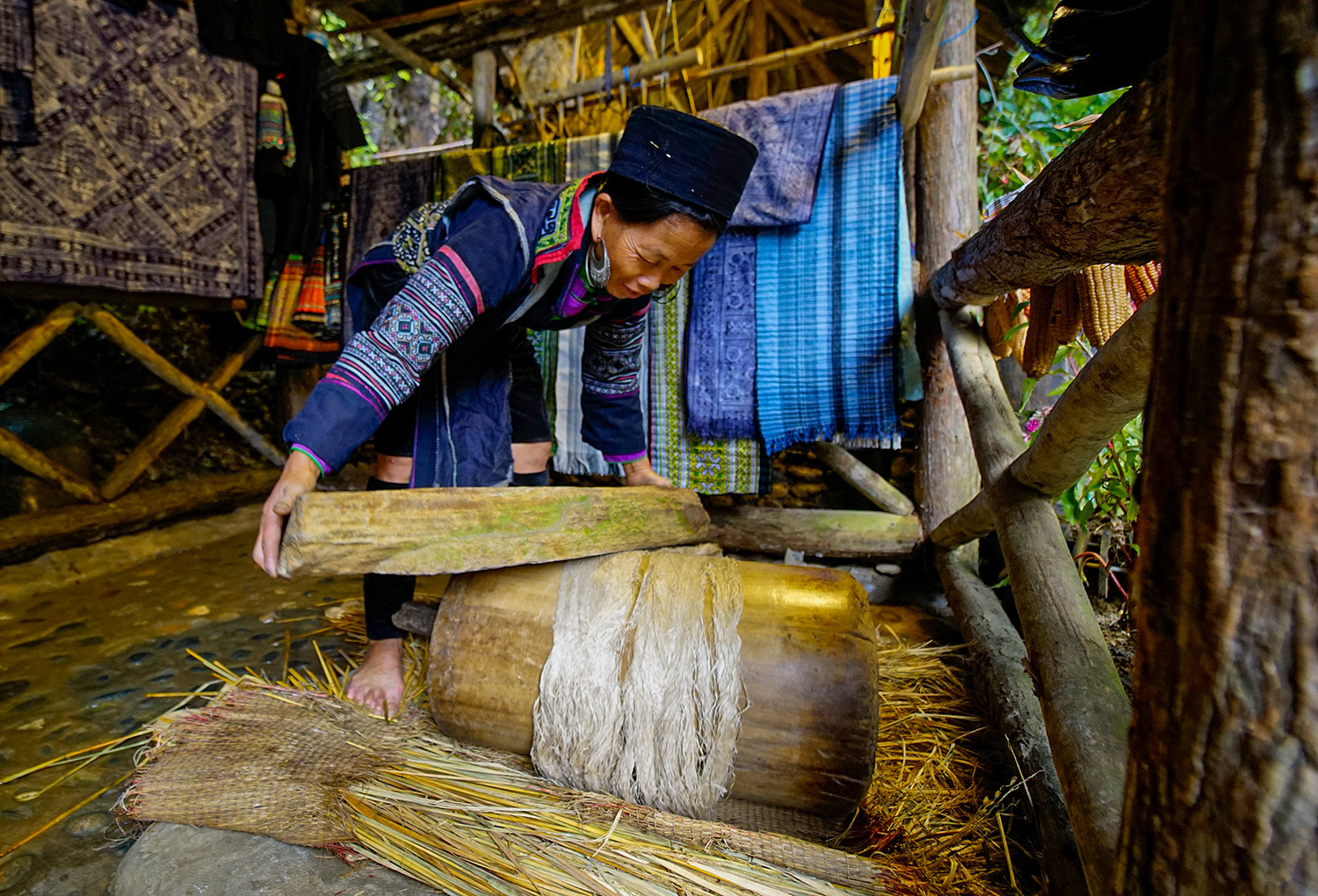
For Chie's products, sometimes newly woven fabrics are dyed and embroidered, but often they also upcycle used garments and turn them into fine bags, purses and many other products. That way, the aspect of up- and recycling enters our portfolio once again. Either way, it is slow fashion: Not only they are made extremely well to last for many years, they are also of timeless beauty and enrapture the wearer for many years.
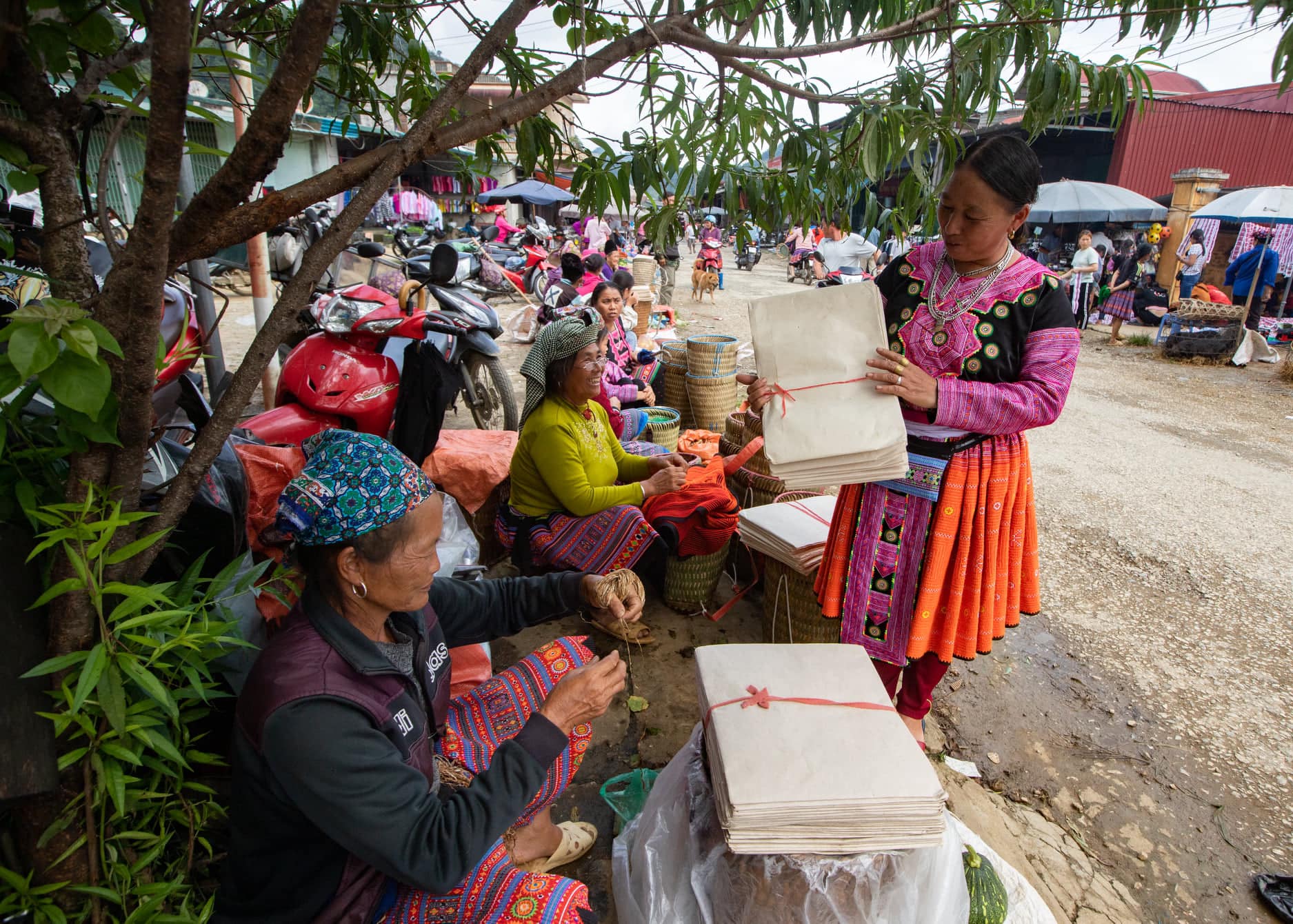
For Chie, every piece transports a small impression of the old and rich H'mông culture. The spirit of the artists fills the traditional patterns with life - they are not "mere" handmade one of a kind products, but convey the refreshing breath of the wild mountains. Ambassadors of the cultural values of the indigenous people of Vietnam.

New Articles
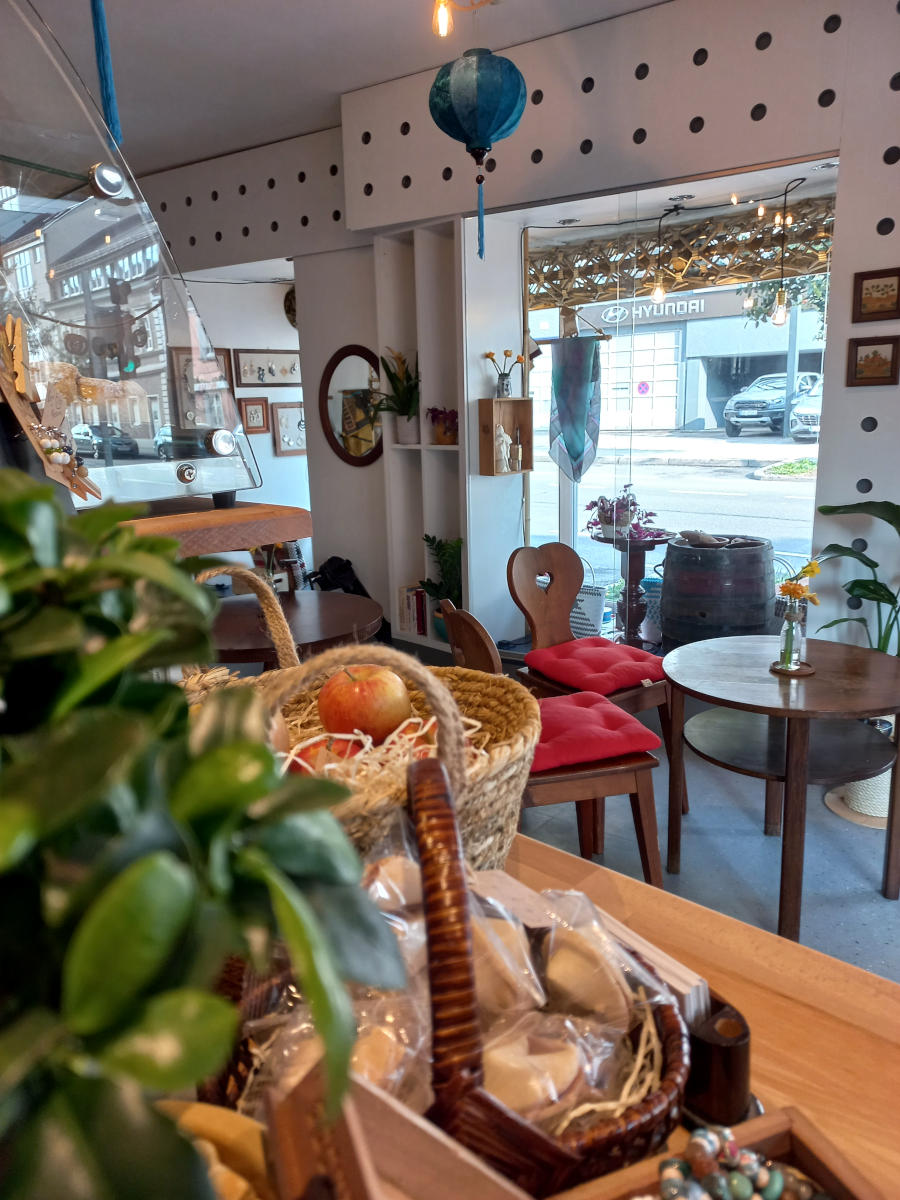 | Avanova and RealiTea Avanova Design stands for handmade fashion jewellery, bags and accessories. Our physical shop RealiTea however is not only an ethnic boutique in Salzburg, but especially a tea house where you can enjoy a pot of excellent tea in our cozy corner. |
 | Leather Jewelry Artisan jewelry from vegetable tanned leather, embossed and hand painted by Dewdrop of Honey. |
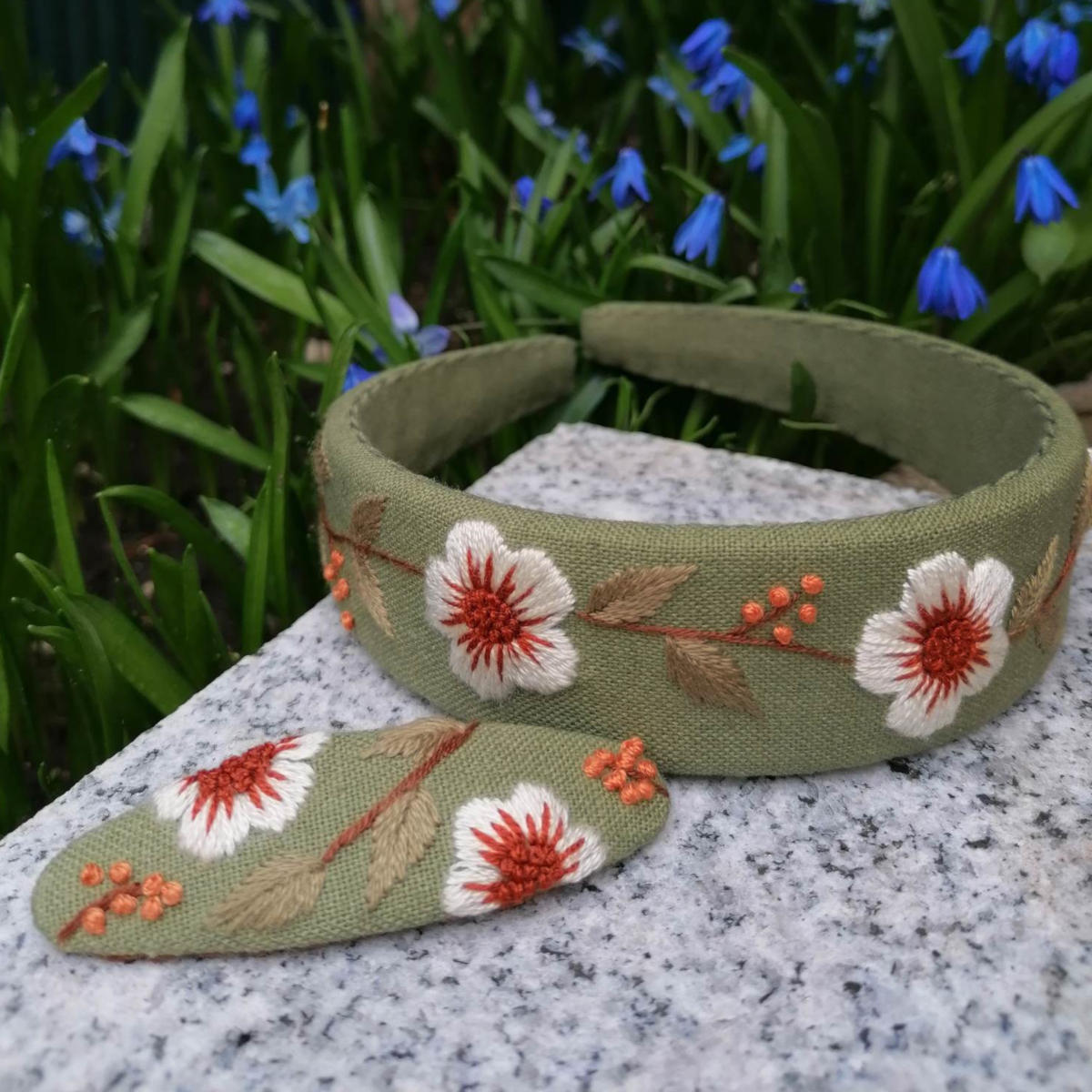 | Hand embroidered hair accessories While the spring flowers are blooming in the forest and in the garden, our shop is in full bloom too! Hand embroidered, floral hair accessories from our partners in Vietnam. |
 | Tadu: Turning old jeans into trendy fashion items Tham and her progressive label Tadu Bag are right on time to lead towards a bright and cool fashion epoch. In this story I want to tell you how she escaped the daily grind and stepped on the adventurous path of slow fashion. |
 | The stunning art of the Hmong people The Hmong are highlanders from the North of Vietnam. Their traditional costumes follow an old and very complex formula of weaving, indigo wax batik and embroidery. Knowledge passed on through generations. |
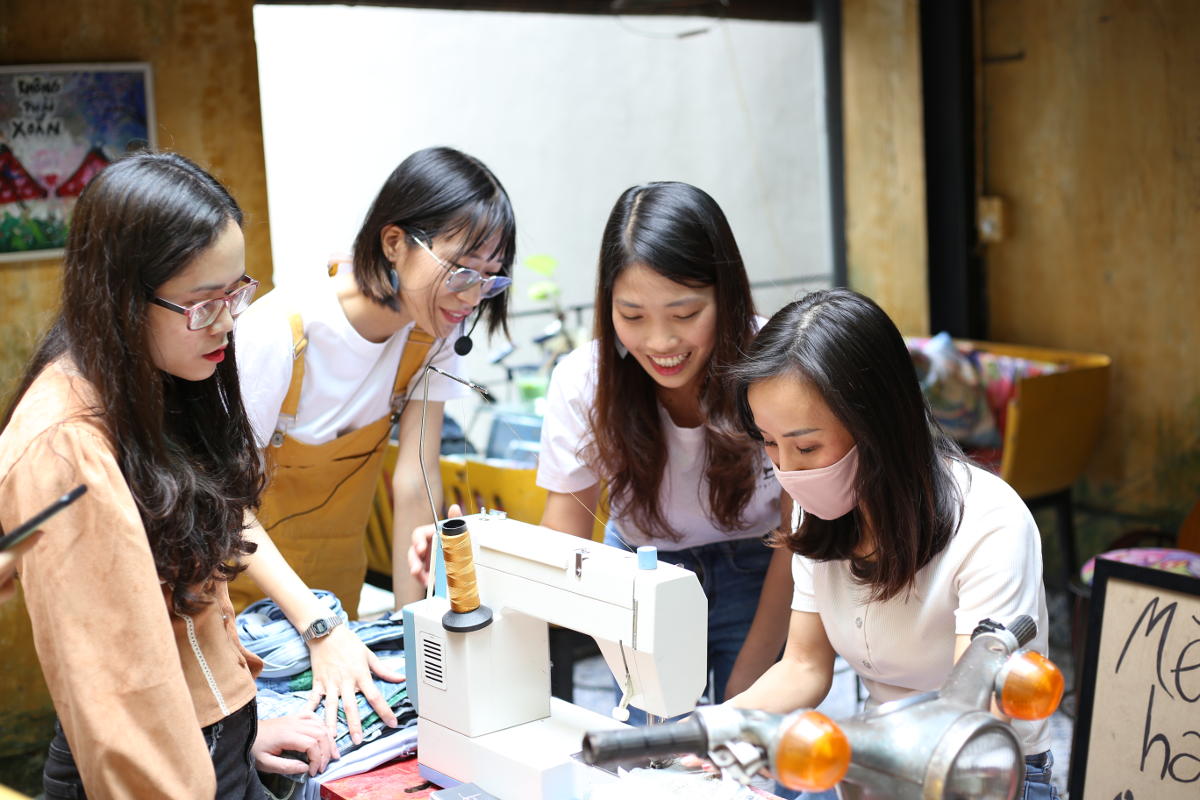 | Awakening old jeans to new life How to implement a business model, be creative at the same time, develop beautiful products and even do something beneficial for the environment? I think the artists from Atelier MeJe are on the right track! |
 | Handmade micro macramé jewellery and shimmering insects Let me introduce Yen with her wonderful micro macramé jewellery and her shimmering insects, made in bead embroidery technique. |

